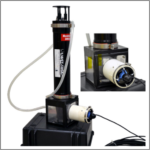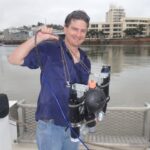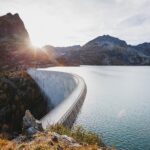This page features select testimonials about Sequoia products. Year in parenthesis is date of testimonial.
“The LISST-100X has been an invaluable tool in our research on marine particle aggregation and disaggregation. The integration of the LISST-100X with our in situ dis-aggregation system (iDAS) has enabled us to systematically study the effects of turbulent energy on particle aggregates, providing critical insights into the dynamics of particle disruption and aggregation in natural aquatic environments. This makes it an essential instrument for advancing our understanding of problems related to, e.g., sediment transport and vertical carbon flux in marine systems.” Full paper here (open access).
Dr. Steven Ackleson, NRL & Dr. Matthew Rau, George Washington University, USA (2025).
 “I really like the software of the LISST-200X instrument.”
“I really like the software of the LISST-200X instrument.”
Dr. Jochen Wollschläger, University of Oldenburg, Germany (2025).
“The 200X is very easy to use because the software and deployment are straightforward and don’t have any problems.”
Anonymous scientist not allowed to endorse products (2025).
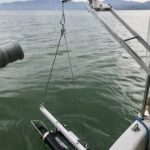 “The LISST instruments played a crucial role in our research by providing high-resolution measurements of particle size distribution (PSD) and concentration along the Rhône River interflow pathway in Lake Geneva. The LISST-100X allowed us to capture detailed vertical profiles of PSD and suspended particulate matter volume concentration, while the LISST-Holo enabled us to visualize and analyze the shape and size of large particles and flocs in situ. Both were instrumental in identifying the presence of clays, silts, microflocs, and macroflocs at various depths, and in determining the changes in particle properties along the interflow pathway. Our findings revealed that macroflocs ONLY formed in the shear layer between the interflow and the hypolimnion, with their size being limited by the Kolmogorov microscale. This study provided unprecedented evidence of suspended sediment flocculation dynamics in a lake environment, highlighting the importance of shear layers in macrofloc formation.”
“The LISST instruments played a crucial role in our research by providing high-resolution measurements of particle size distribution (PSD) and concentration along the Rhône River interflow pathway in Lake Geneva. The LISST-100X allowed us to capture detailed vertical profiles of PSD and suspended particulate matter volume concentration, while the LISST-Holo enabled us to visualize and analyze the shape and size of large particles and flocs in situ. Both were instrumental in identifying the presence of clays, silts, microflocs, and macroflocs at various depths, and in determining the changes in particle properties along the interflow pathway. Our findings revealed that macroflocs ONLY formed in the shear layer between the interflow and the hypolimnion, with their size being limited by the Kolmogorov microscale. This study provided unprecedented evidence of suspended sediment flocculation dynamics in a lake environment, highlighting the importance of shear layers in macrofloc formation.”
Dr. Violaine Piton, Mercator Ocean International, France (2025).
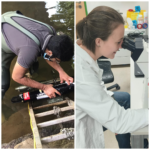 “With the LISST-200X we made accurate in situ measurements directly in the field, capturing the natural state of aggregated suspended particulate matter without the alterations that typically occur during sample transport and storage. The LISST-200X facilitated a comprehensive comparison of aggregate size in situ and ex situ, highlighting that ex situ measurements are unsuitable for determining the natural particle size of aggregated suspended matter; they must be measured in situ. We also investigated the measurement times required to obtain robust particle size distributions in situ and found these to be three minutes or more in some cases.” Link to Paper!
“With the LISST-200X we made accurate in situ measurements directly in the field, capturing the natural state of aggregated suspended particulate matter without the alterations that typically occur during sample transport and storage. The LISST-200X facilitated a comprehensive comparison of aggregate size in situ and ex situ, highlighting that ex situ measurements are unsuitable for determining the natural particle size of aggregated suspended matter; they must be measured in situ. We also investigated the measurement times required to obtain robust particle size distributions in situ and found these to be three minutes or more in some cases.” Link to Paper!
Dr. Sjoukje de Lange, Dr. Dhruv Sehgal, Wageningen University & Research, The Netherlands (2024)
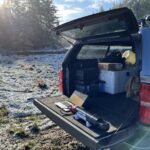 “I got to take the new instrument out to the field for the first time at one of my coastal marsh sites this week. We saw some cool shifts in particle composition over high and low tide! I have to say the software is quite user friendly considering I essentially unpackaged the new instrument in the field and could very quickly figure out how to use it. Thanks for recommending the LISST-200X, it should be versatile enough for a lot of different applications.”
“I got to take the new instrument out to the field for the first time at one of my coastal marsh sites this week. We saw some cool shifts in particle composition over high and low tide! I have to say the software is quite user friendly considering I essentially unpackaged the new instrument in the field and could very quickly figure out how to use it. Thanks for recommending the LISST-200X, it should be versatile enough for a lot of different applications.”
Nicholas Ward – Earth Scientist, Team Leader – Pacific Northwest National Laboratory (PNNL) – Sequim, Washington – USA (2024)
“I really like the LISST-Tau unit. For our operation it works perfectly, and to be honest, I haven’t read the manual,…..just plugged it in and started using it.”
Matt Slivkoff of In-Situ Marine Optics
https://insitumarineoptics.com/ Bibra Lake, Perth, (Australia) (2022)
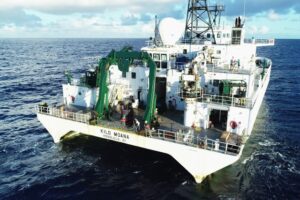
HOT Cruise 313 aboard R/V Kilo Moana, Station Aloha, Hawaii
The University of Hawaii at Manoa (UH) operates the Hyper-bb hyperspectral backscatter instrument. Professor Angelicque White uses the instrument as a component of the open ocean Hawaii Ocean Time-series (HOT) program to collect key datasets related to calibration and validation of scattering based measurements of the base of the ocean food web, phytoplankton.
Sequoia asked Dr. White to answer two questions specific to the use and application of this instrument,
See the Q&A below:
Question 1: What problems are you trying to solve by using the Hyper-bb?
“Backscatter is often used as a proxy for the standing stock of particulate carbon, including living organisms. We will use the Hyper-bb to improve calibrations and validations of regional remote sensing retrievals of phytoplankton carbon and understand how spectral backscattering coefficients change with community composition in the oligotrophic North Pacific subtropical gyre (NPSG)”
Question 2: How did you conclude that the Hyper-bb would help you solve problems and be useful for future research before purchasing?
“It has long been recognized that a comprehensive understanding of how marine phytoplankton contribute to the bulk backscattering signal in the ocean is critical for accurate interpretation of remote sensing data; however, most ocean sensors make backscattering measurements at one or two wavelengths. Preliminary research at the University of Hawaii (and elsewhere) has indicated that the relationship between backscatter and phytoplankton has a strong spectral component in the NPSG that may reflect shifts in cell size or composition. As new ocean color sensors (PACE) are readying for launch, procurement of a Hyper-bb will allow us to address accuracy and uncertainties in the relationship between backscattering coefficients and phytoplankton carbon.”
Learn more about Dr. White clicking here
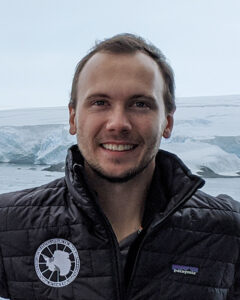
Kelly Thomas, Biological Oceanographer
A longtime user of LISST instruments, the University of Alaska Fairbanks has been using the 4,000m rated LISST-Deep from Sequoia Scientific, Inc. The LISST-Deep instrument measures in-situ particle size distribution, optical transmission, and the optical volume scattering function (VSF) at depths down to 4,000 meters.
Sequoia asked Thomas Kelly (Postdoctoral Fellow), two questions specific to the use and application of this instrument, see his Q&A comments below:
Question 1: What problems are you trying to solve by using the LISST-Deep?
“The Gulf of Alaska is a rich mosaic of biological diversity underpinned by complex physical drivers and circulation. One of our principal goals is to deconstruct the marine environment into individual processes, such as how organic matter is formed, transported, reshaped, and ultimately supplied to deep sea and benthic (seabed) communities. Many of the tools used to investigate these processes are time consuming and of low resolution; alternatively, the LISST platform permits high resolution snapshots of the organic matter that couples easily to our biological, chemical, and physical observations.”
Question 2: How did you conclude that the LISST-Deep would help you solve problems and be useful for future research before purchasing?
“We needed a system that could be reliable in all weather conditions and simply integrated into our existing system. Often time is a limited factor for our field work, so a system like the LISST allowed us to get more data with fewer resources than alternatives. Information from the LISST allows us to start integrating data from various parts of the ecosystem into a cohesive whole since the size range of the LISST is well suited to filling in the gap below traditional imaging systems (i.e. >200 um).”
“The LISST system can also be deployed across multiple platforms including our new Deep-focus Plankton Imager (DPI), which is a towed vehicle that is outfitted with a wide variety of ecosystem sensors including the LISST (small particles), three shadowgraph cameras (large particles and small organisms) and active acoustics (fish-finder). Such a system allows us to ask questions about the entire biological community instead of just small parts of it.”
Thomas Kelly, Postdoctoral Fellow, Biological Oceanography – UAF College of Fisheries and Ocean Sciences – Fairbanks, Alaska, USA (2023)
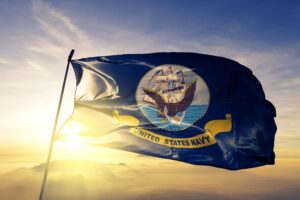 “We bought LISST-Portable S/N 001 over 20 years ago and I’ve used it many times since, so I was curious to see the LISST-Portable|XR when it was purchased by a colleague of mine in 2022. I actually powered my old LISST-Portable up a few days ago, after locating a PC with a Windows 95 operating system, and it’s still working except for a couple of rings on the ring detector dropping out. Good to see the changes in the LISST-Portable|XR over the original LISST-Portable from 20+ years ago.”
“We bought LISST-Portable S/N 001 over 20 years ago and I’ve used it many times since, so I was curious to see the LISST-Portable|XR when it was purchased by a colleague of mine in 2022. I actually powered my old LISST-Portable up a few days ago, after locating a PC with a Windows 95 operating system, and it’s still working except for a couple of rings on the ring detector dropping out. Good to see the changes in the LISST-Portable|XR over the original LISST-Portable from 20+ years ago.”
Ernest Arias, US Navy (2022)
“We have been using the LISST-ABS to measure suspended sediment concentration (SSC) in the penstocks of two hydropower plants in the Swiss Alps for turbine erosion mitigation during several years, and in the Rhone river during a measuring campaign. The USB connection and the simplicity of the LISST-ABS software make the LISST-ABS a very convenient instrument for spot measurements of SSC in our applications. Because LISST-ABS is less sensitive to fine silt particles than turbidimeters, sand particles are better accounted for in the measurements. This is important for such studies, because sand particles have a higher erosion potential.”
Dr. David Felix, Laboratory of Hydraulics, Hydrology and Glaciology (VAW), ETH Zürich, Switzerland (2021).
“Sequoia’s instruments, including the workhorse LISST 100X, have been an integral part of our program’s research since 1997. Effective training and support by this company has always been completed with the highest standard of professionalism with the right touch of personal interest. Sequoia is one of the very best field instrument companies that I have dealt with during my over 30-year career.”
Dr. Grace Massey
Director of the Coastal Hydrodynamics & Sediment Transport Lab, Virginia Institute of Marine Science (USA) (2021)
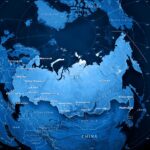 “The LISST-Deep device has a wide range of measured particles, a great operational depth, and a rather high number of discrete measurements per unit of time; allows in situ measurements in the water column; and has the ability to interface with a CTD, which makes this laser diffractometer the most versatile tool for studying the concentration and PSD of sediments.”
“The LISST-Deep device has a wide range of measured particles, a great operational depth, and a rather high number of discrete measurements per unit of time; allows in situ measurements in the water column; and has the ability to interface with a CTD, which makes this laser diffractometer the most versatile tool for studying the concentration and PSD of sediments.”
Dr. A.S. Lokhov
Shirshov Institute of Oceanology, Russian Academy of Sciences, Moscow (Russia) (2021)
Read Dr. Lokhov’s paper “In situ Measurements of the Characteristics of Suspended Particles in the Barents Sea by the LISST-Deep Laser Diffractometer” here.
 “The LISST was the first instrument I bought with my startup package at UMaine 18yrs ago. It served me very well in studies ranging from lab and field inquiries of optical properties of aggregates to the distribution of salt crystals in the Dead Sea. We used it on moorings for time series as well as in flow-through systems without fail. Definitely a tool that should be in the lab in anybody interested in studying (not just measuring) water quality. Sequoia’s service has always been top of the industry with rapid response and fast turn around.”
“The LISST was the first instrument I bought with my startup package at UMaine 18yrs ago. It served me very well in studies ranging from lab and field inquiries of optical properties of aggregates to the distribution of salt crystals in the Dead Sea. We used it on moorings for time series as well as in flow-through systems without fail. Definitely a tool that should be in the lab in anybody interested in studying (not just measuring) water quality. Sequoia’s service has always been top of the industry with rapid response and fast turn around.”
Dr. Emanuel Boss
University of Maine (USA) (2020)
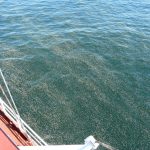
Pine Pollen in the Baltic Sea. Courtesy Dr. Dariusz Ficek.
“We are interested in studying pine pollen floating on the water, and in particular how it modifies the water color in the Baltic Sea. This color change affects remote sensing measurements. We have improved our methodology and research technique by using the LISST-100X to measure the size and concentration of the pollen in situ.”
Read the paper “Pine pollen grains in coastal waters of the Baltic Sea” here.
Dr. Dariusz Ficek
Pomeranian University in Slupsk (Poland) (2020)
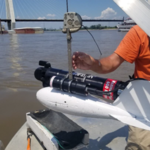 “The LISST-200X with the scoop worked well for our data collection in the Mississippi River. In the summer of 2018, we did field work near Chester, Illinois and St. Louis, Missouri. At both locations, we deployed the LISST-200X (with scoop) attached to a standard torpedo weight. This allowed us to easily configure the LISST-200X so that it was parallel with the river flow during deployment, and we could measure suspended sediment size and concentration with minimal disturbance. The LISST-200X sediment data we collected were of high quality and formed the basis for a successful M.Sc. thesis (Martinez MJ (2019): Investigation of suspended-sediment concentration in the Mississippi river using laser diffraction and remote sensing surrogate methods. Download thesis here.).”
“The LISST-200X with the scoop worked well for our data collection in the Mississippi River. In the summer of 2018, we did field work near Chester, Illinois and St. Louis, Missouri. At both locations, we deployed the LISST-200X (with scoop) attached to a standard torpedo weight. This allowed us to easily configure the LISST-200X so that it was parallel with the river flow during deployment, and we could measure suspended sediment size and concentration with minimal disturbance. The LISST-200X sediment data we collected were of high quality and formed the basis for a successful M.Sc. thesis (Martinez MJ (2019): Investigation of suspended-sediment concentration in the Mississippi river using laser diffraction and remote sensing surrogate methods. Download thesis here.).”
Dr. Amanda Cox
Saint Louis University (USA) (2020)
 “The LISST-200X can be used for in-situ determination of particle size spectra and volume concentrations, but it can also be used as a laboratory particle size analyser. In our research, we used both LISST-200X and FlowCAM to validate the size distribution of Microcystis colonies from 50 um to 500 um. We found very good agreement between the Microcystis Chlorophyll a and the volume concentration from the LISST-200X and FlowCAM over a wide range of Chlorophyll a concentrations.”
“The LISST-200X can be used for in-situ determination of particle size spectra and volume concentrations, but it can also be used as a laboratory particle size analyser. In our research, we used both LISST-200X and FlowCAM to validate the size distribution of Microcystis colonies from 50 um to 500 um. We found very good agreement between the Microcystis Chlorophyll a and the volume concentration from the LISST-200X and FlowCAM over a wide range of Chlorophyll a concentrations.”
Dr. Xingqiang Wu
Key Laboratory of Algal Biology, Institute of Hydrobiology, Chinese Academy of Sciences (China) (2020)
“The products developed by Sequoia Scientific, Inc. are very useful for our work.”
Juan Salvador Font Munoz, Ph.D.
Institut Mediterrani d’Estudis Avançats, IMEDEA (Spain) (2019)
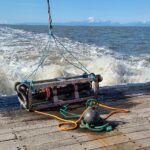
LISST – Cook Inlet, Alaska
“Our two LISST-100Xs have consistently provided us with high quality data for various field projects conducted over the past 10 years, in environments ranging from rivers and lakes to the coastal ocean. We’ve relied on our LISSTs for environmental monitoring, sediment transport model calibration and validation, and scientific research, and have experienced nearly 100% data return for thousands of vertical profiles and months’ worth of moored time series.
Further, we have received exceptional technical support for our LISST-100Xs. About nine years ago, one of our LISST’s lasers became misaligned during shipping. One of Sequoia’s technicians spent over 2 hours on the phone with our field staff to talk us through the alignment procedure until it was corrected. As the result of this remarkable service, our fieldwork proceeded as planned, which saved thousands of dollars and valuable time.”
Grace Chang, Ph.D.
Marine Science and Engineering
Integral Consulting Inc. (USA) (2019)
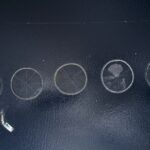 “The LISST-Portable|XR data were instrumental for us in development and implementation of a new product”
“The LISST-Portable|XR data were instrumental for us in development and implementation of a new product”
Kim Schøn Ekmann
BioMar A/S (Denmark) (2019)
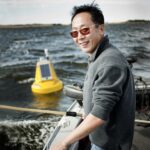
Dr. Xiaodong Zhang
“…I have to compliment the service provided by Sequoia that has been outstanding, all at no additional charges. LISST-VSF is an excellent instrument, when it is carefully calibrated. With the calibration we developed, we were able to measure the VSFs of particles of very clean seawater in the North Pacific Ocean that have been filtered through 0.2 um.”
Xiaodong Zhang, Ph.D., Professor
University of Southern Mississippi (USA) (2019)

Flag of Denmark
“Our LISST-100 has been in operation for 20+ years on multiple field studies, ranging from the frigid waters of Greenland and Canada over Danish coastal waters to tropical waters in Vietnam and Costa Rica. It has travelled tens of 1000’s of miles on planes, cars and research vessels and has been returned for service/repair only once in that period.”
Thorbjorn Joest Andersen, Ph.D., Professor
Department of Geosciences and Natural Resource Management
University of Copenhagen (Denmark) (2019)
“You and your team have released a very impressive upgrade (LISST-200X). I do confess to having a bit of LISST envy, even though my 100X is and continues to be a key component of my field programs.”
Anonymous scientist not allowed to endorse any product. (2019)
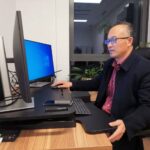
Professor Mr. Zhang Wenxiang
“A long term client, at China East Normal University we have purchased 5-6 LISST products over the years, including LISST-100X and LISST-200X. As the state key laboratory, we use LISSTs to study coastal dynamic geomorphology and dynamic sedimentary process in the Yangtze estuary. The LISSTs are very accurate instruments, that are very easy to operate. We will continue using them in our research and we also a plan to use the LISST-ABS to study high-concentration sediment movement near the bed during storms.”
Professor Mr. Zhang Wenxiang
State Key Laboratory of Estuary and Coastalology, China East Normal University (China) (2019)
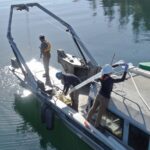
Drone photo credit, Ryan McEliece
“At Gravity we have used the LISSTs for fieldwork around the globe since 2009. Our LISST-100X units (we have three) have been critical for optimizing high volume sampling programs for trace metals, and we have incorporated the LISST-100X as part of our SOP for trace metal sampling, in cooperation with the US Environmental Protection Agency. Our LISST-Deep made it possible for us to respond rapidly to the Deepwater Horizon accident in 2010 and we were able to provide data regarding the oil droplet size and concentration for the underwater plume modelling and tracking effort. Our LISST-ABS has been a key component for multiple environmental impact assessment programs carried out in connection with offshore drilling and for use in our real-time construction monitoring buoys. Our LISSTs have made it possible for us to improve our field programs and gain new business, which we otherwise wouldn’t have had. Furthermore, Sequoia has provided outstanding technical support, service and help at short notice whenever the need arose, making sure that our fieldwork schedules were not compromised, thereby saving us money and time.”
Mr. Shawn Hinz, Managing Partner
Gravity Marine (USA) (2019)
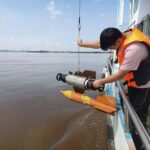
Mr. Zhang Yu with LISST-100X
“We purchased the LISST-100X a couple of years ago and we do the sediment measurement on the Hei River, which is the boundary river between China and Russia. The LISST-100X can give us very accurate particle size distribution and concentration compared with our traditional manual analysis.The LISST-100X has saved us a lot of time. We have created our own protection/deployment frame and now we can mobilize the system anytime and anywhere. Thanks for this fantastic product. Next stage we will try the brand new LISST-SL2 for our measurements.”
Mr. Zhang Yu
Heihe Hydrology Bureau of Heilongjiang Province (China) (2019)
“[the LISST-Portable] was really handy, and we’re very pleased with that product,” says Selbig. “[Sequoia] has been very helpful whenever we would have some complications or technical problems.” The LISST-Portable can be transported easily. “It’s a very small unit. It allows us to take it from one site to the next and get nearly instantaneous results.”
Mr. Bill Selbig, USGS (2012). June 2012 issue of Stormwater vol. 13(4): pp. 8-16. Accessed January 3rd, 2025. pdf here.
